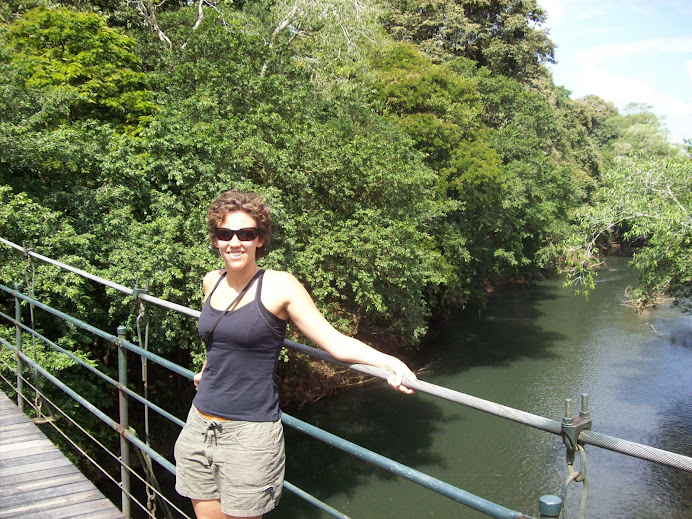Over the past two weeks I have taken a number of trips out to the sugarcane producing region to witness how sugarcane is being produced. Below I have included some pictures from those trips with captions describing the reality of the production of sugarcane that is turned into sugar and ethanol for consumption within Brazil and for export to the world which has deemed Brazil's ethanol industry as "sustainable", carbon neutral, and good for the local economy. During these two weeks I have seen and heard enough already to fill several more pages of this blog with a strong argument against anyone who would make such claims about Brazil's ethanol production. I'll keep it simple for now and let these pictures and brief captions do the talking.
Stillage, a toxic liquid waste produced when sugarcane is
turned into sugar or ethanol, being dumped into a ditch in
the middle of a plantation. Some of this stillage will be dilluted
with water and then sprayed onto the fields as fertilizer (as
seen in the picture below), and some of it will end up in
local waterways. How stillage is disposed of has huge consequences
for local ecosystems and the people who depend on them for
water and food. In some local rivers and estuaries fish
are found poisoned and floating dead on the surface every day.
A sugarcane field after being burnt and harvested. In the
background, a field being sprayed with stillage as fertilizer,
and a mangrove forest. What you can't see in the picture is
that there is a man made ditch between the mangrove and
the sugarcane field, interrupting the flow of water into the
mangrove, drying it out, and preparing it to be cut down
and converted to a sugarcane field. This is part of a process of
converting forests to agricultural land that has been going
on here for centuries.
Sugarcane cutters in the field. These men and women work
long hours cutting cane and are paid by the ton of cane they cut
rather than an hourly wage. In Pernambuco's Forest Region
cutting sugarcane is the principal economic activity for most
rural families. The concentration of land in the hands of
the sugarcane plantation owners has left little land for small
farmers to work in non-sugar agriculture or any other industry. Fishing
communities are also suffering as mangroves are destroyed and rivers
and estuaries are polluted.
Children and women bathing and washing clothes in a small river
on the edge of a sugarcane plantation. The fields are covered with
dilluted stillage and less than 500 feet from this spot there was an
overflowing tank of pure stillage. You can only imagine what the water
quality here must be like. For the people living on the edge of the
plantation- they were most likely driven there at some point in the past-
this is an important source of water. Hopefully it's just for bathing
and washing and not for drinking.
A man selling fruit on market day in Sirinhaém. He is
someone who has been lucky enough to be able to hold onto
his land and family farm despite pressure from the constantly
expanding sugarcane plantations in the region. Families with small
farms that produce food for their own consumption and to take
to market tend to have a much higher quality of life than those who
rely solely on income from cutting sugarcane.
A sugarcane field with a remnant of Atlantic Forest behind it.
In what is still called the "Forest Region" of Pernambuco,
most of the remaining forest is in small pockets of 1 square
kilometer or less. These are essentially islands of forest in
a sea of sugarcane destined to become sugar and ethanol.
A sugarcane field burning in the middle of the day. The fields are burnt
just before harvest, supposedly to get rid of some of the excess fibers
on the cane, and to kill off any snakes or other dangerous critters lurking
in the fields. Workersgo out into the fields soon after the burning, sometimes
while the ground is still smoldering, to begin cutting cane. On any afternoon
the Forest Region you can see numerous fields burning on the horizon. At night it
appears that the whole region is on fire, as the planters take advantage of cool
evenings to burn their fieldsand reduce the risk of fires getting out of control.
Needless to say, during the harvest season air quality here is extremely poor.
Link to my Picasa album with more photos of my fieldwork in Pernambuco:































No comments:
Post a Comment